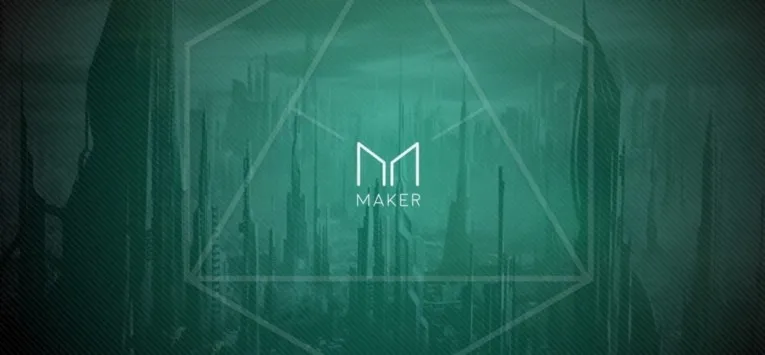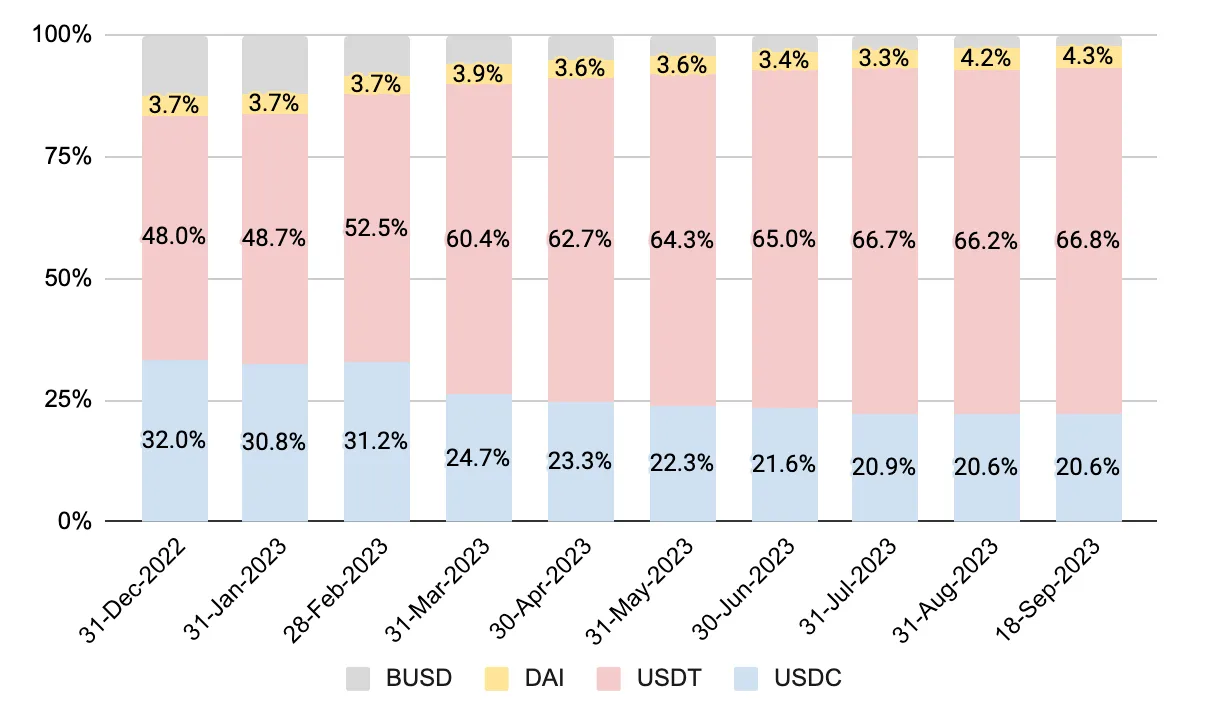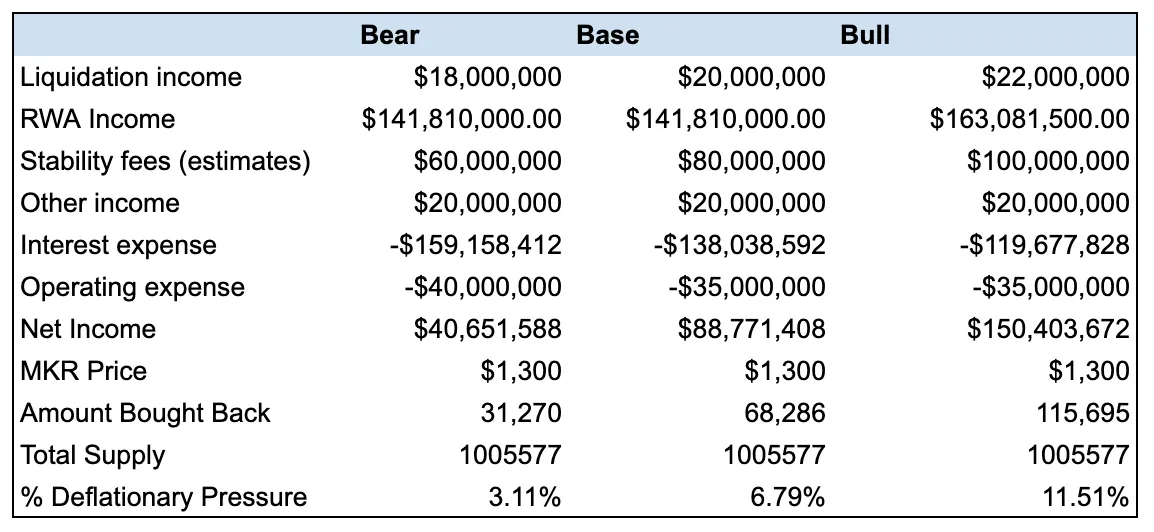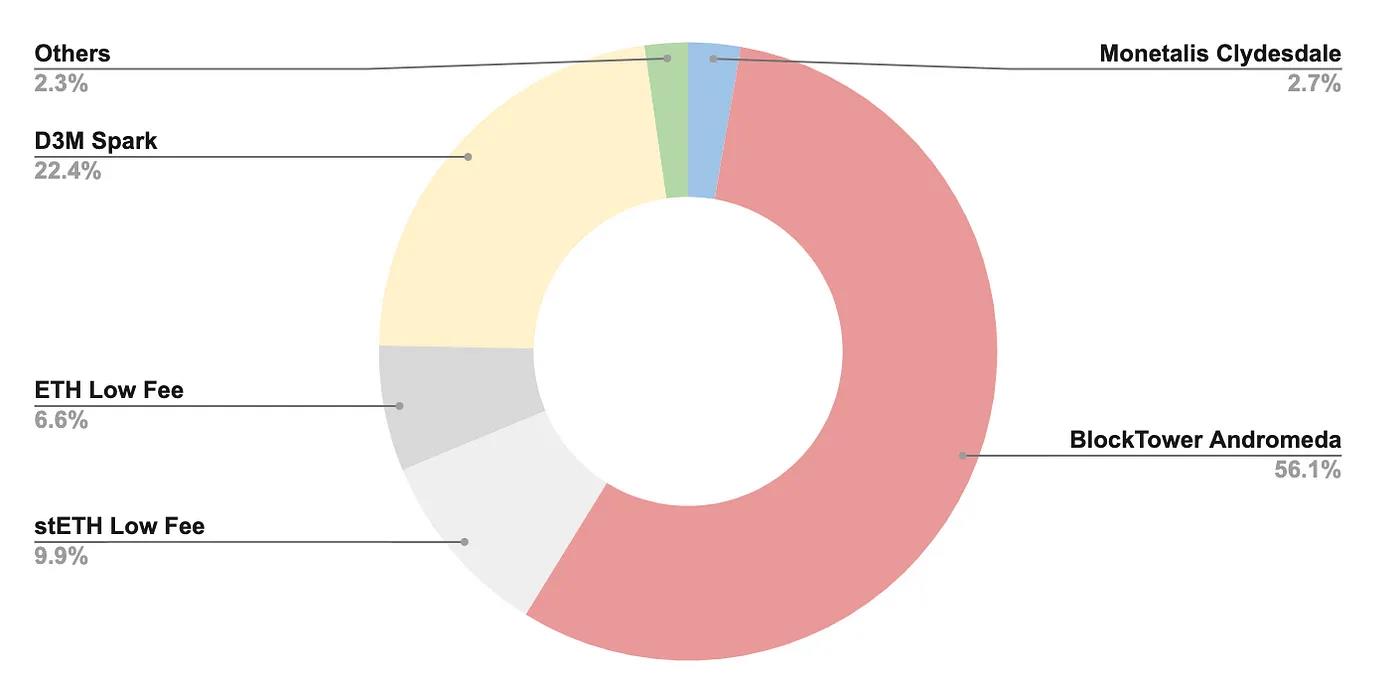MakerDAO has increased its exposure to real-world assets (RWAs).
Written by: Kunal
Translated by: DeepTech TechFlow

In this article, I will examine Maker DAO and its stablecoin DAI. Since July 2023, the MKR token has surged by nearly 90%. The reasons are as follows:
MakerDAO has increased its exposure to real-world assets (RWAs). They currently hold $1.14 billion worth of US Treasury bonds and $500 million of USDC, the latter earning income through Coinbase Prime, which helps to boost their revenue.
The DAO voted to reduce the remaining buffer ceiling from 200 million DAI to 50 million DAI. Any DAI exceeding this threshold will automatically be used for regular MKR buybacks and will be provided to the Uniswap V2 DAI/MKR pool to increase MKR's on-chain liquidity over time.
The DAI Savings Rate (DSR) has reached 5%. This is the income users can earn by depositing DAI into the Spark Protocol and using the income generated by RWAs and stability fees (when you repay debt by returning DAI, you will be charged a fee proportional to the amount of DAI returned. This is called a stability fee). Subsequently, the amount of DAI locked in the DSR has surged, accounting for approximately 27% of the total DAI supply.
1. Performance of DAI since the beginning of the year
Looking at the market value of stablecoins over the past year, USDT is the clear winner, capturing market share from USDC and BUSD. There has been some FUD surrounding these two stablecoins, leading investors to use USDT. The launch of the above measures has sparked interest in DAI, and its market share is slowly approaching historical levels from 2021.

2. Maker's use of RWA
Currently, Maker generates about 60% of its interest income from RWAs. So how does this work?
Let me use Clydesdale as an example. Essentially, Clydesdale establishes an SPV and borrows DAI from Maker. This DAI is then exchanged for USDC through the PSM and converted into US dollars. These US dollars are then used to purchase Treasury bonds, which are held by the SPV as collateral for the borrowed DAI. Clydesdale earns a small reward from managing the SPV, and the remaining interest from the US Treasury bonds goes to Maker.
3. Income and cost analysis of DAI collateral
I have made a high-level forecast of MakerDAO's income/cost for the next 12 months, emphasizing bullish, fundamental, and bearish scenarios. This is important because MakerDAO's net income goes into the remaining buffer, and any amount exceeding 50 million will be used regularly to repurchase MKR tokens.
While most of the income growth comes from RWAs, considering that various vaults are approaching their debt ceilings, this growth may stagnate. Any further growth can only be achieved if Maker introduces new vaults to purchase RWAs.
Most of the remaining income will come from stability fees on newly minted DAI and lending DAI to the Spark Protocol (Maker's DeFi sub-DAO) through D3M. The debt ceiling of the D3M vault has increased from 20 million to 220 million over the past few months. This vault is a platform for direct lending to the Spark Protocol, allowing users to borrow DAI against other assets as collateral at an annual interest rate of approximately 5.53%. Out of this 5.53%, 10% goes to Aave, as Spark Protocol uses the Aave codebase.
As for its operating expenses, the forecast for 2023 is similar to 2022, at around 24 million. I believe this may increase to approximately 30 million over the next 12 months. MakerDAO now supports more vaults with RWAs and plans to launch Maker as a new chain independent of Ethereum. These will increase expenses for technology, development, oracles, and ecosystem expansion, which account for the majority.
In the next year, most of the income will be used to pay the 5% interest on DSR. The amount of DAI locked in the DSR has significantly increased over the past 3 months. I expect this growth to decrease to a more sustainable level and have adjusted the past growth rate. Even so, I estimate the cost to be between 120 million and 160 million. This will be a key factor that needs to be monitored month by month to determine the health of the protocol.
Considering the above factors, the supply-side deflationary pressure over the next 12 months is estimated to be around 3-12%.

- Details of DAI supply
To remain profitable, the amount of newly minted DAI by Maker must continue to increase. I analyzed the changes in DAI across different vaults over the past 3 months. 56% of the increase in DAI comes from BlockTower Andromeda, 22.4% from the increase in the debt ceiling of the D3M vault, and approximately 15% from vaults collateralized with ETH/stETH. The debt capacity of the BlockTower Andromeda vault is nearing its limit, and growth will slow down.
Looking ahead, the debt ceiling of the D3M vault is a good proxy for the demand for DAI. Looking at the numbers on Spark, many users seem to be depositing wstETH as collateral to borrow DAI. These DAI may enter the DSR, hoping for a 5% return and a 24 million SPK airdrop to offset the 5.53% cost of borrowing DAI.
The most expensive scenario for Maker is if the growth in the DSR comes from existing DAI rather than newly minted DAI.

- Conclusion
Currently, I am optimistic about Maker. The use of RWAs acts as a buffer for paying DAI interest in the DSR. The recent guidance from the Federal Reserve to maintain higher interest rates for a longer period bodes well for Maker in the next 2 years. Here are the key points I will monitor to assess the health of the protocol:
- Growth rate of DAI in the DSR (if the growth in the DSR exceeds the growth of newly minted DAI, this may be a cause for concern);
- Debt ceiling of D3M and utilization of DAI on the Spark Protocol (indicating demand for newly minted DAI. Particularly interesting after the SPK airdrop);
- Launch of any new RWA vaults (additional sources of income).
免责声明:本文章仅代表作者个人观点,不代表本平台的立场和观点。本文章仅供信息分享,不构成对任何人的任何投资建议。用户与作者之间的任何争议,与本平台无关。如网页中刊载的文章或图片涉及侵权,请提供相关的权利证明和身份证明发送邮件到support@aicoin.com,本平台相关工作人员将会进行核查。




